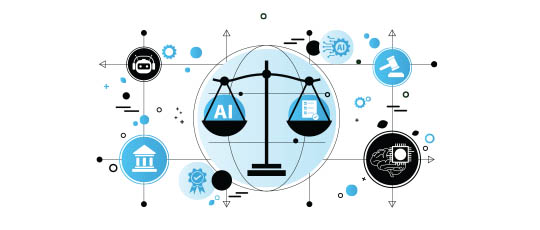For WorldatWork Members
- The Role of Total Rewards in Managing Change Fatigue, Workspan Magazine article
- Conquering Change Fatigue, Workspan Magazine article
- Internal Talent Marketplaces Get a Boost from AI, Workspan Magazine article
For Everyone
- Workers Are Seeking Greener Pastures, and Higher Pay Is the Driver, Workspan Daily article
- Young Workers Opting for the Job-Hop Instead of the Climb, Workspan Daily article
- Leveraging Competitive Compensation to Retain Top Talent, Workspan Daily article
- Invest in Career Development to Retain Young Talent, Workspan Daily article
Stress in the face of change and churn is to be expected — it’s human nature. Organizational leaders, including those responsible for total rewards, have had plenty of that as of late. Concerns over recession prospects, the impending impacts of artificial intelligence (AI) on processes and people, identified holes and graying in the labor market, and emerging workforce/workplace imbalances have many feeling overwhelmed.
But like the resulting stress, the factors contributing to it have been … expected — and that should leave organizational, HR and total rewards professionals feeling empowered and able to respond. This was the message delivered by financial expert and economic forecaster Marci Rossell during her main stage session Monday at WorldatWork’s Total Rewards ’25 conference in Orlando, Fla.
“If you can see the train coming, concerns about a train wreck are actually not as big of a problem,” said Rossell, the former chief economist at CNBC and co-host of its “Squawk Box” news program. By recognizing what lies ahead, she added, “people will take action to protect themselves from the worst outcomes.” (It’s, again, human nature.)
Rossell advised the audience to:
- Acknowledge the current state: She used words such as “chaotic,” “volatility,” “roller coaster” and “nervous” to describe it.
- See it for what it is: “If you are surprised by any of this, you haven’t been listening over the last 18 months,” she said. But even still, “what matters is you can see this coming.”
- Act accordingly: It’s not too late. “You have time to adjust, to effectively deal with it. The pandemic showed us we can adjust far faster than what we ever realized before.”
Check out other Workspan Daily articles from Total Rewards ’25:
- Might a Sales Mindset Be Your Key to Total Rewards Success?
- The Keys to Creativity and Driving Innovative Total Rewards
- The Monumental Mission of Meaningful Mentorships
- The Pros and Cons of Giving Managers Discretion on Merit Increases
- Using Analytics, Innovative Framework to Transform HR/Total Rewards
- How An Industry Leader Sees Technology Transforming Total Rewards
- Biopharma Compensation Leader Has Put AI Under the Microscope
- Boldyn Networks Offers a Bolder Approach to Employee Well-Being
Key Issues to Watch and Address
Leaning on her background as a trend-spotter, analyst and data interpreter, Rossell offered up observations on several critical issues with human capital ramifications (those trains coming down the track) and how she thinks they will shake out (which can help you see the situation more clearly and appropriately respond).
On the economy: Rossell said that while some leading indicators suggest a recession is imminent, she is more optimistic based on how economists define “recession” and what the current numbers reflect.
For a recession to occur, she said, “You need declines in economic output. You need certain things to fall — retail sales, wholesale trade, industrial production. And, most importantly, you need to see a decline in employment. I know companies are announcing job losses. We saw a lot of tech layoffs last year. We’ve seen announcements of layoffs at the federal government level. But all those headlines are not actually translating into macroeconomic job losses. The unemployment rate has stayed steady at about 4.2% — that’s just your average, run-of-the-mill rate. Job gains every single month have been coming in anywhere from 100,000 to 250,000 new jobs created.”
Rossell advised the audience to focus on initial unemployment claims. “That tells me how quickly companies are truly shedding labor. Last year, amid all those layoff announcements from tech companies, you never actually saw it in the true numbers. I think the reality is that even if they were losing their jobs, they were getting new ones so quickly they never even bothered to fill out the paperwork. When you actually look at the data, that number has been steady at somewhere around 200,000 to 230,000 people every single week claiming unemployment benefits. It has to go over 300,000 to indicate weakness in the actual macroeconomic job market.”
On the impact of AI: Rossell thinks AI will transform work and make some jobs redundant. But she sees the technologies as more of a job “enabler” than “destroyer.”
“Anything that requires a large amount of data to be summarized and analyzed — those jobs are going to shrink as a proportion of employment,” she said. “In particular, coders — a job that has been in great high demand — may be the job that is threatened first. But here is what I know about AI. It can take people with relatively low skills and make them medium- to high-skilled workers. That is its real promise. And it has the most promise in the sectors where demand isn’t restrained — education, healthcare, consulting, legal services, etc. If the price of healthcare, etc., is low enough, I and others want an endless supply of it. The difference is, we’re all stuck in this idea that all demand looks the same and it’s constrained by population. In the spaces where AI is going to have the most impact, demand isn’t limited. So, you don’t have the [degree of] employment-destroying consequences that you had when robotics came along and took factory jobs.”
On the labor market: Rossell pointed to labor supply constraints because more people are retiring than entering the workforce. She noted that, in 2000, about 1.5 million workers turned 65, the classic age of retirement. In 2025, the number of workers who turn 65 will balloon to 4.1 million.
“The workforce is shrinking,” she said. “This will have big impacts on your business. The U.S. has a labor shortage, but it’s not just here. China will actually have it worse in the years to come. By the end of this century, China’s population will be half what it is today. The world over the next 25 years or so is going to wake up to this reality. The implications will be extreme.”
On the employer-employee power balance: Even with recent layoffs and news about some large employers rethinking their COVID-19-era workplace policies, Rossell noted workers have increased power in the employer-employee relationship.
Rossell said organizations need to bend some policies and meet workers in the middle. For instance, regarding remote work, several prominent studies have shown a considerable percentage of employees would give up some of their salary (upward of 10%) and/or some of their benefits to retain flexibility over where and when they do work.
“The change to more remote, flexible work standards would have happened without [the pandemic]. People value flexibility in their work schedules,” she said. “Executives who don’t see the value of remote work are wrong-headed because they aren’t looking at the data. You can save money with a lower footprint — less office space, more flexibility. And if someone values working from home by $10,000, then meet them in the middle. [If they agree, provide the benefit and] reduce their salary by $5,000, and everybody is good.”
Editor’s Note: Additional Content
For more information and resources related to this article, see the pages below, which offer quick access to all WorldatWork content on these topics:







